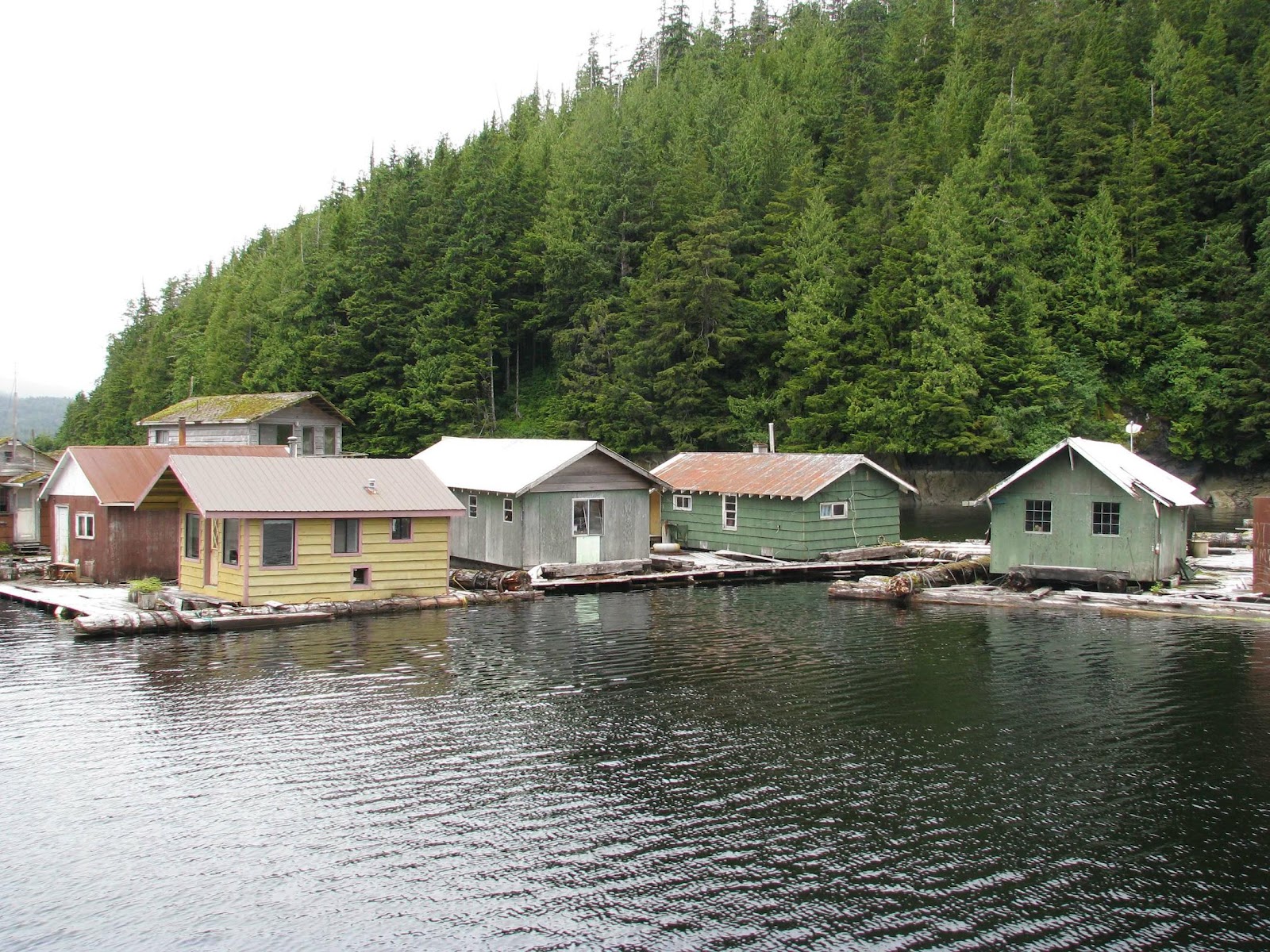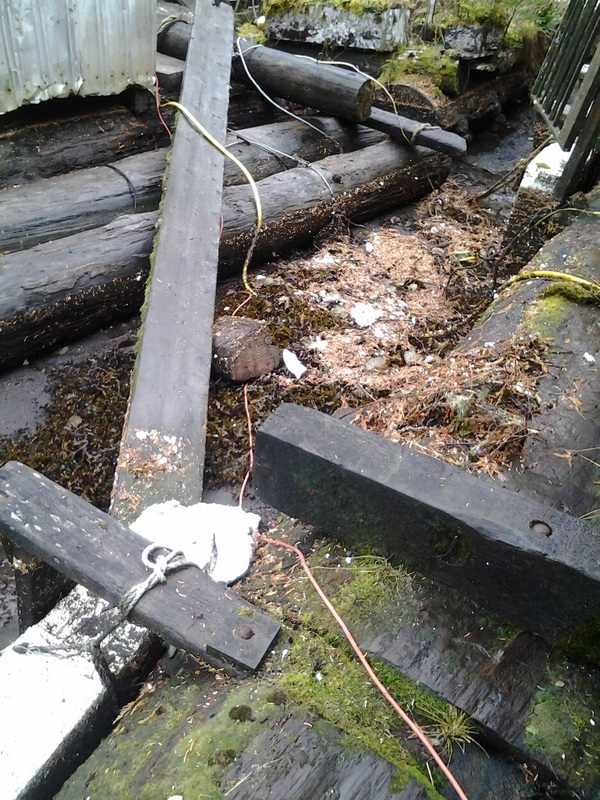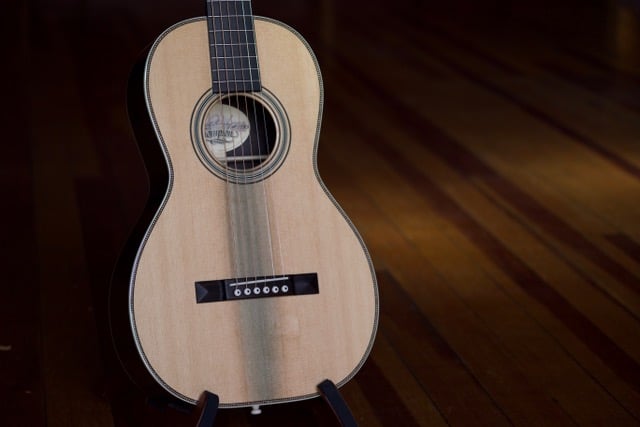This blog post addresses the unique history and qualities of the salvaged Sitka spruce sets that we offer. Much of the information was collected by Alan Ollivant from North American Woods who also supplied the photos in this post. We thank Alan for assisting our search for woods that have that sound quality we are looking for. This is a great story of the history and of culture that one might not associate with guitar building.
One of the unique characteristics of this Sitka spruce that was submerged in water for a long period of time is that the very soft tissue in the cells literally is dissolved, so when it is dried out, the cells are far more “open” with very little cottony soft tissue to be seen. This achieves 2 advantages for guitar building..
 The base of operations were these “floats” as the loggers made their living falling, bucking and hauling Spruce, Cedar and Hemlock trees to the water to tow to local sawmills. There was always a “Bunkhouse Float” or “Cookshack” as it was nicknamed, which consisted of a spartan living space, wood or oil-fired heat/cook stove, and bunks for the loggers to sleep. When the loggers would return from their day of hard work, they would eat hearty meals in cramped, stuffy quarters.. They would hang their heavy shirts, pants and long-underwear to “dry out over night” to start the process all over again around 4 AM.
The base of operations were these “floats” as the loggers made their living falling, bucking and hauling Spruce, Cedar and Hemlock trees to the water to tow to local sawmills. There was always a “Bunkhouse Float” or “Cookshack” as it was nicknamed, which consisted of a spartan living space, wood or oil-fired heat/cook stove, and bunks for the loggers to sleep. When the loggers would return from their day of hard work, they would eat hearty meals in cramped, stuffy quarters.. They would hang their heavy shirts, pants and long-underwear to “dry out over night” to start the process all over again around 4 AM. The one that Alan and his crew dismantled was in pretty sorry shape. They harvested the wood in about 2012 after it had been out of the water for about 50 years. To this day, the wood retains evidences of marine borers, blue/black iron staining from the cables and fasteners, and in some cases, nail and/or bolt holes, since it is authentic Reclaimed wood from a commercial / industrial structure.
The one that Alan and his crew dismantled was in pretty sorry shape. They harvested the wood in about 2012 after it had been out of the water for about 50 years. To this day, the wood retains evidences of marine borers, blue/black iron staining from the cables and fasteners, and in some cases, nail and/or bolt holes, since it is authentic Reclaimed wood from a commercial / industrial structure.


